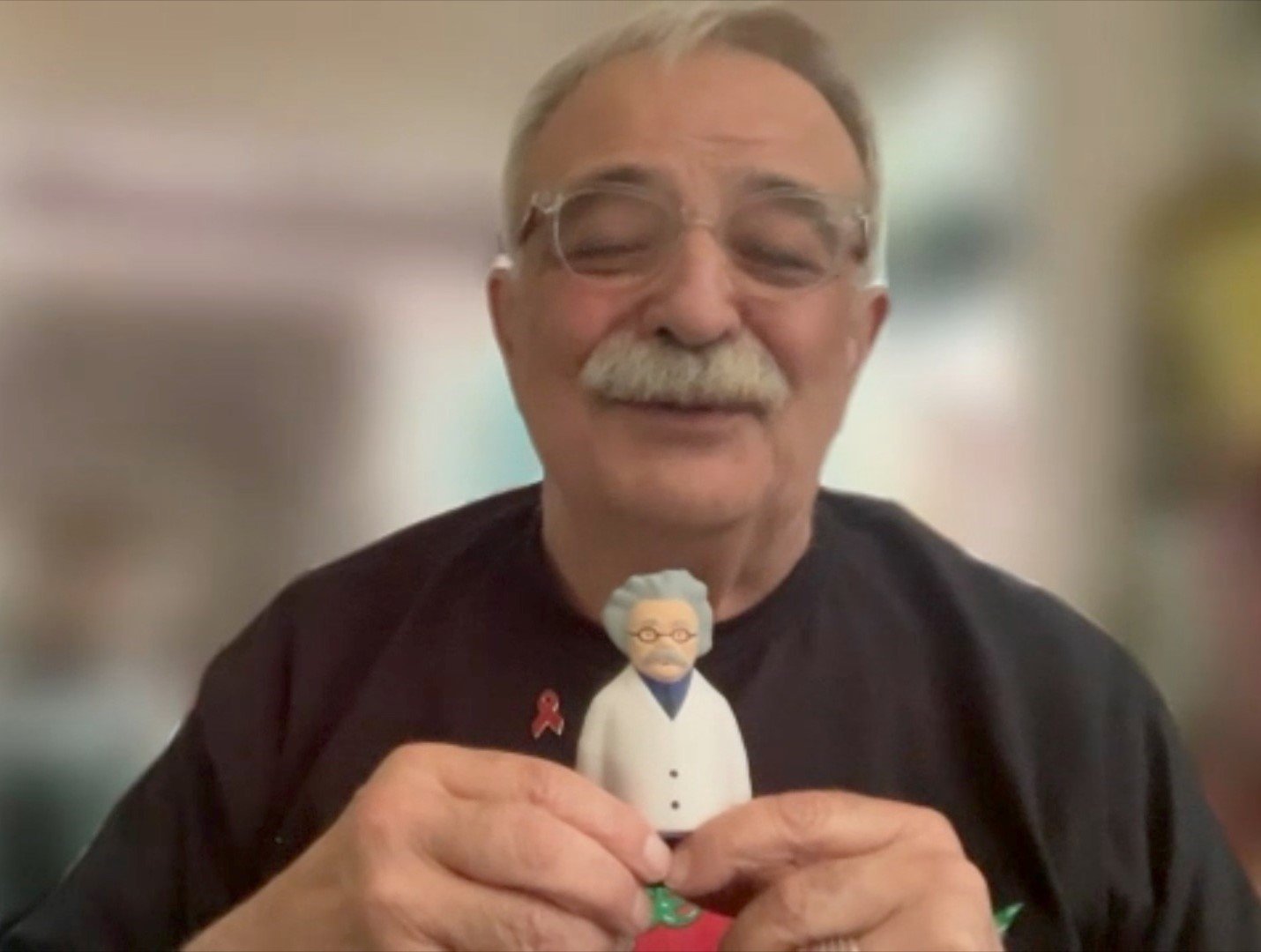Small items tell a big story
The hot weather got me thinking about the tomatoes I’m growing, which got me remembering working for my father, who had a wholesale fruit and vegetable business at the public market. I didn’t like working there because I thought selling tomatoes wasn’t glamorous enough for a young star like me.
But I was wrong. What an experience that was. I quote my father today, when I dispense my endless advice to my younger colleagues.
All of this came back to me as I’m going through boxes of documents and items I’ve collected over the decades of my work in HIV/AIDS. The material is going to the rare books collection at the University of Rochester library to boosts its archives on the history of HIV, particularly in Rochester.
This enamel AIDS ribbon was a gift from Dr. Nick Rango, who led the state’s AIDS Institute and helped us start Community Health Network.
One item I found after all this time was an enamel AIDS ribbon lapel pin given to me by Dr. Nick Rango, a physician in New York City who became director of the state health department’s AIDS Institute.
Dr. Steve Scheibel and I met Nick in 1988 when we were putting together the Community Health Network, now called Trillium Health. We went to talk to him about some money to help us get started. He dispensed advice to us about the whole project and that it was needed, but it was going to be expensive to do. He gave us $50,000 and each of us one of these AIDS ribbons to wear.
A gift when I graduated medical school.
I also found a little figurine that my former wife gave me when I graduated from medical school. We always thought it was interesting because it looks like how I looked at the time – no gray hair, a mustache, and a little doctor bag.
More recently, at an AIDS fundraiser, some people who worked for a pharmaceutical company gave me one of those stress-reducing squeeze toys in the shape of a white-haired, mustachioed doctor who wears glasses and is in a white coat.
Some pharmaceutical representatives gave me this at an AIDS fundraiser. We thought it was quite funny.
We thought that was quite funny. They thought it looked like me. I don’t know. But the mustache and glasses kind of give it away. You reach a point, if you do this long enough, you become a parody of yourself.
I have cartons of these types of things, and they all tell a story – the story of community, how people are connected to the movement, and they think about it and give you things related to it.
I've said this before but I’ve got to say it again. This this community really responds and continues to respond to the occasion. If you're going to try and tackle something as devastating and explosive and as difficult as AIDS in those early days, this is a very good place to do that because you have community here who really care about what's going on.



